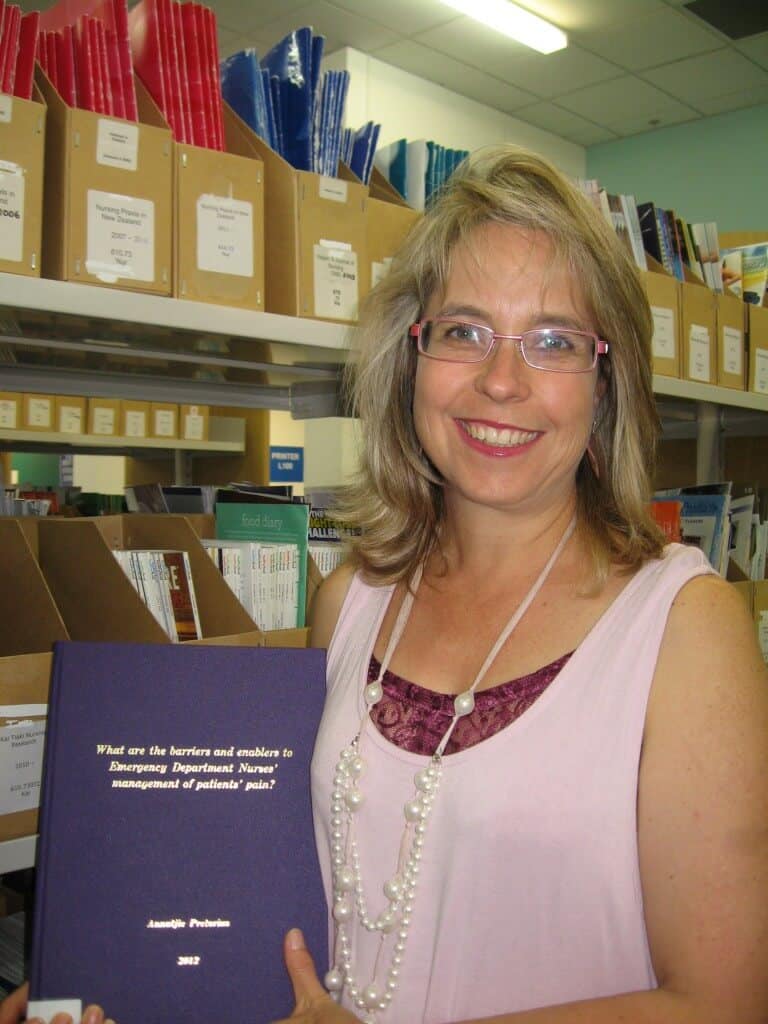 Oligoanalgesia is the failure to recognise or properly treat a patient’s pain. It is of great concern in hospital Emergency Departments (ED) as pain is the main reason why people seek emergency care and patients who present to ED expect rapid pain relief.
Oligoanalgesia is the failure to recognise or properly treat a patient’s pain. It is of great concern in hospital Emergency Departments (ED) as pain is the main reason why people seek emergency care and patients who present to ED expect rapid pain relief.
Nurses at the front line of emergency services are uniquely placed to be active leaders in pain management. Despite great improvements in available pain management strategies and tools for assessing pain, there are still barriers ’ pain and oligoanalgesia remains a common phenomenon worldwide.
Annatjie Pretorius works as a nurse in the ED at Hawke’s Bay Hospital. For her Master of Nursing thesis research she sought to identify what nurses throughout the country perceived to be the enablers and barriers to their management of patients’ pain. Her aim was to seek information about nurses’ knowledge of pain management, to identify possible gaps in pain assessment, and to suggest opportunities for improving the management of pain in patients who present to hospital EDs.
Annatjie surveyed 137 members of the College of Emergency Nurses New Zealand (CENNZ), who completed an online questionnaire.
Two thirds of those who responded had over 15 years of nursing experience and held postgraduate qualifications. Ninety percent of them acknowledged that the best judge of pain was the patient.
While nurses are responsible for the assessment and administration of analgesic drugs or other relief treatments, they are not able to independently prescribe drugs for analgesia, meaning they cannot always give patients what might be considered ideal for pain relief. Furthermore, although the surveyed nurses showed reasonably good general knowledge, they lacked current knowledge about opoids.
Annatjie suggested that ED nurses needed to be more proactive in increasing their knowledge and to become leaders in pain assessment and management. She identified the main enablers to improved management of patient pain as including the need for standardised, nurse-initiated analgesic protocols and more expert pain ‘champions’. Her survey showed that few of these champions exist in ED. Along with being able to provide instantly available advice and education for colleagues, the benefits of having nurses as pain champions would include their ability to concentrate on those patients presenting to ED with acute and chronic pain, thus reducing the workloads of those looking after the acutely ill.
Annatjie received the Hawke’s Bay District Health Board Director of Nursing Award for Excellence in Postgraduate Nursing Study.
